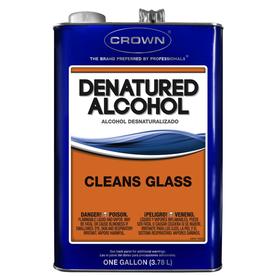Denatured alcohol
Denaturing or denaturing called altering the natural odor, taste or appearance ( color) of a substance by the addition of auxiliaries,
- To make food unfit for human consumption (for example, neutral alcohol for exemption from the tax on alcohol )
- Thus make it easier to taste or odor substances recognizable and less dangerous, for example, poisons and explosive gases (such as natural gas).
- 2.1 natural gas, propane, butane,
- 2.2 fuel oil
- 3.1 poisons
Denaturing of food
Substances, which are taxed at higher food use, can be used cost differently when they are brought for this purpose in the form of inedible in circulation.
It is then crucial to use a difficult re removable denaturant. At least the distance to be more expensive than the unvergällte fabric. Primarily, as a denaturing substances with an unpleasant odor or taste to use.
Alcohol
Alcohol (ethanol, agricultural alcohol ) is taxed ( in Germany by the liquor tax ), untaxed ethanol is therefore denatured. Is responsible for this in Germany the Federal Monopoly Administration for Spirits in Offenbach am Main. In addition to the substances authorized in Germany and other denaturants are allowed if they meet the requirements of the tax authorities and are registered in another EU country as a denaturing agent. In the Netherlands, for example, mint oil for alcohols in cosmetic products.
- Denatured alcohol is completely denatured, usually with the denaturing MEK ( methyl ethyl ketone) and denatonium benzoate, which tastes extremely bitter. Alcohols for technical and chemical purposes are only partially denatured, since they are further processed. Here MEK can usually not be used.
- For the vinegar - producing the alcohol is denatured with acetic acid.
- For the production of fuel, the alcohol is denaturated with 2% benzene or ETBE.
- For use as a raw material in the chemical industry are common denaturant methyl ethyl ketone, petroleum ether, toluene and cyclohexane. Other approved materials are shellac, Fichtenkolophonium, diethyl phthalate, thymol, diethyl ether and tert- butanol in combination with 2 -propanol or denatonium benzoate. The choice of material depends on the application. Thus, emphasis is placed on the preparation of cosmetic products that no foul-smelling substances. In preparation agents for laboratory use no influence to the desired reaction may take place by the denaturant.
- Pyridine is no longer in use denaturants, which was, however, formerly often used.
Table salt
Salt was taxed in the Federal Republic of Germany until 1993 with the saline control. The publicly available de-icing salt, also called road salt, was characterized by dyes. For denaturing is magnesium chloride offers, since it also has a good de-icing and bitter tastes.
Denaturing of energy sources
Natural gas, propane, butane,
The odorless gases natural gas, propane and butane are fragrances, mostly mercaptans added to detect gas leaks ( odorisation ). In addition comes mainly tetrahydrothiophene to apply, smells like garlic. After introduction of this safety measure, the number of devastating gas explosion fell significantly.
Fuel oil
Since heating oil can be used by diesel engines, fuel is dyed red for tax reasons. However, the dye used can relatively easily be removed, which is why EU-wide in addition Solvent Yellow 124 is mixed, as it is difficult to remove, but it is easy to prove.
Denaturing of hazardous substances
Poisons
Even poisons are clearly marked by denaturing to prevent the inadvertent disclosure or ingestion. The pesticide Zyklon B was provided to warn of the active hydrogen cyanide, which is highly toxic with a fragrance. Mostly this was methyl bromoacetate or chlorine gas.










